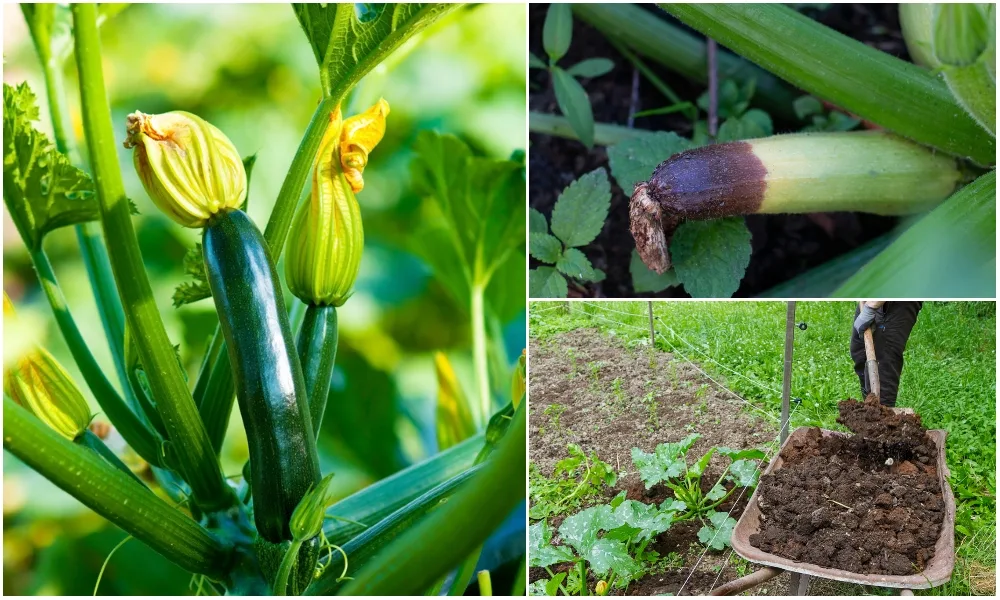
Zucchini (Cucurbita pepo var. cylindrica) is a popular mainstay in the home garden. And it’s no wonder why – sow only one or two plants and you shall receive copious amounts of green, elongated fruit.
Mild in taste yet slightly sweet, zucchini is one of those vegetables that goes so well with so many recipes. Don’t let any go to waste by planning ahead and preserving your zucchini surplus.
Growing zucchini plants isn’t hard as long as you give them everything they need to thrive.
Related Reading: 15 Zucchini Growing Mistakes That’s Hurting Your Harvest
One way to ensure your harvest is truly legendary is to team up your zucchini plants with their polyculture companions.
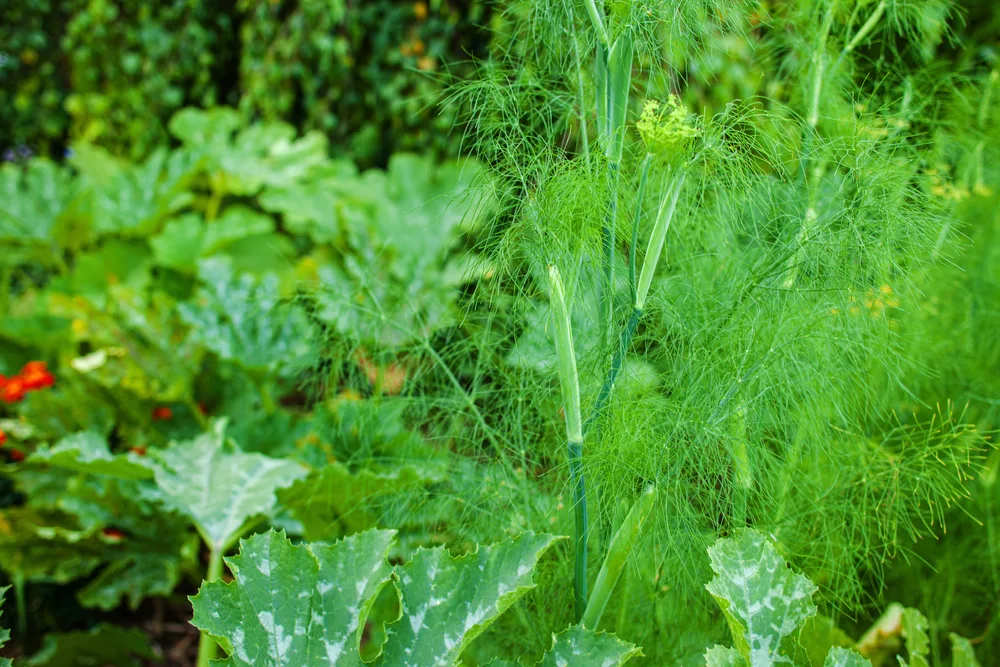
Intercropping and edging the plot with friends-of-zucchini brings with it better pollination, soil fertility and pest control – all while boosting yields, enhancing flavor and saving precious garden space.
Here are 10 plants that make nice with zucchini (and two that don’t).
1. Corn (Zea mays)
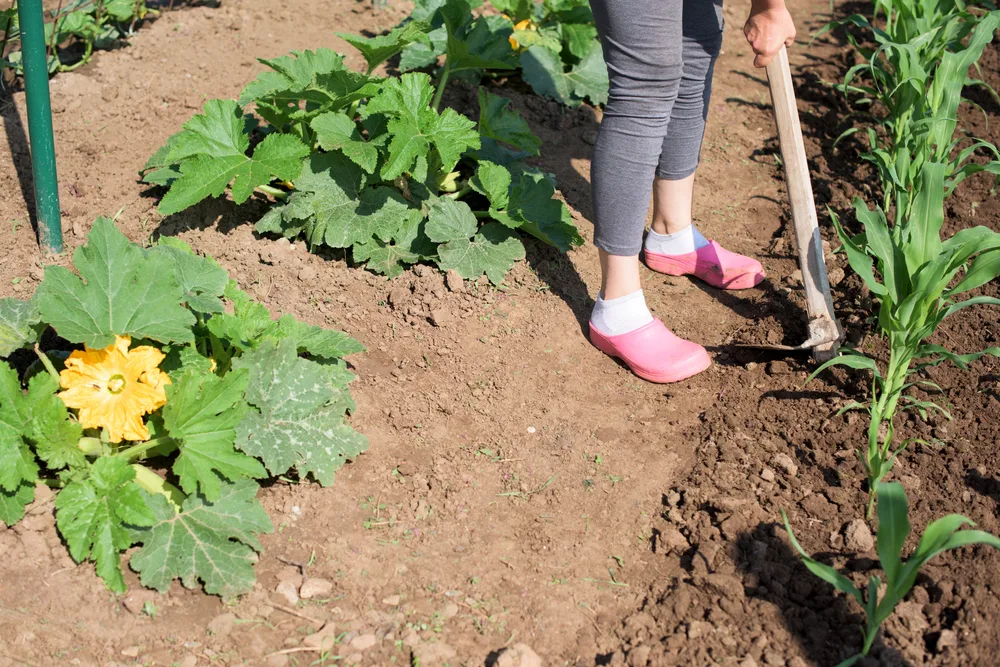
One of the oldest companion planting techniques is known as the Three Sisters Garden, which was developed by indigenous peoples in North America more than 3,500 years ago.
The Three Sisters form a mutually beneficial relationship with one another to create a companion planting dream team.
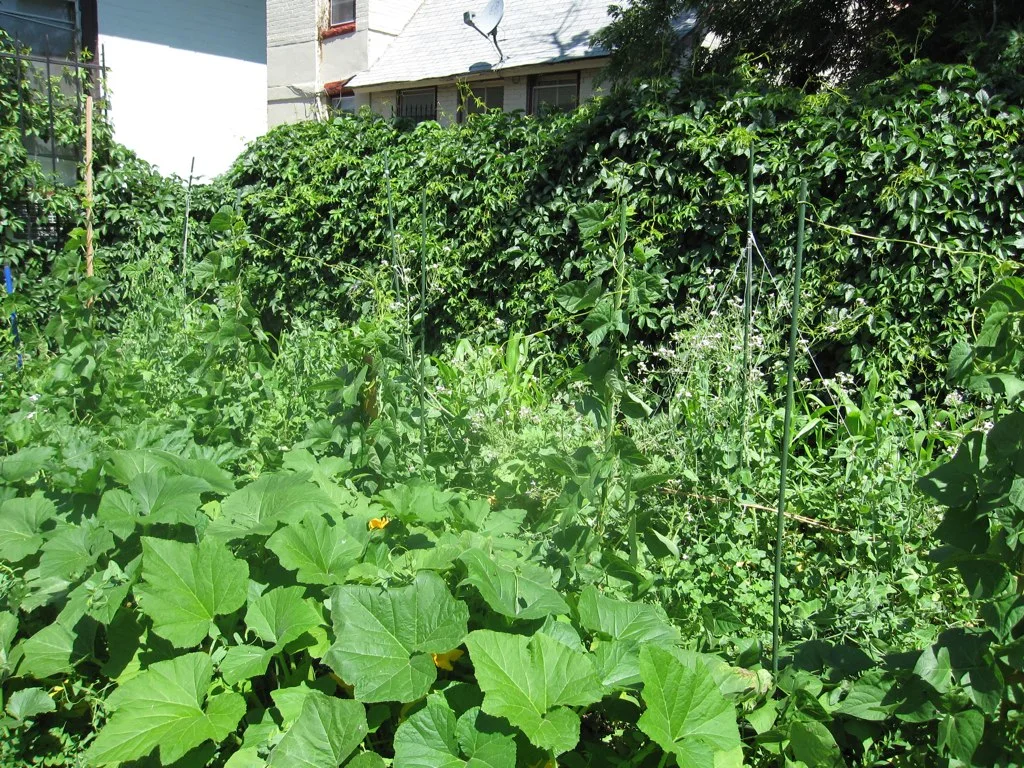
Squash is one of the Three Sisters. This includes summer squash – like zucchini.
Zucchini, like other Cucurbits, has large and broad leaves, each reaching around 12-inches across. Some zucchini varieties are vining and others have a bushier habit, but both need plenty of space to grow.
The long reach of zucchini plants acts as a living mulch. By shading the ground and blocking out sunlight, zucchini foliage prevents weeds from invading while helping to retain moisture in the soil.
Corn is another Sister. Squash and corn are fine neighbors since they share similar needs in the vegetable patch. Both will flourish with lots of sun, consistent watering and regular feeding.
2. Beans (Phaseolus vulgaris)
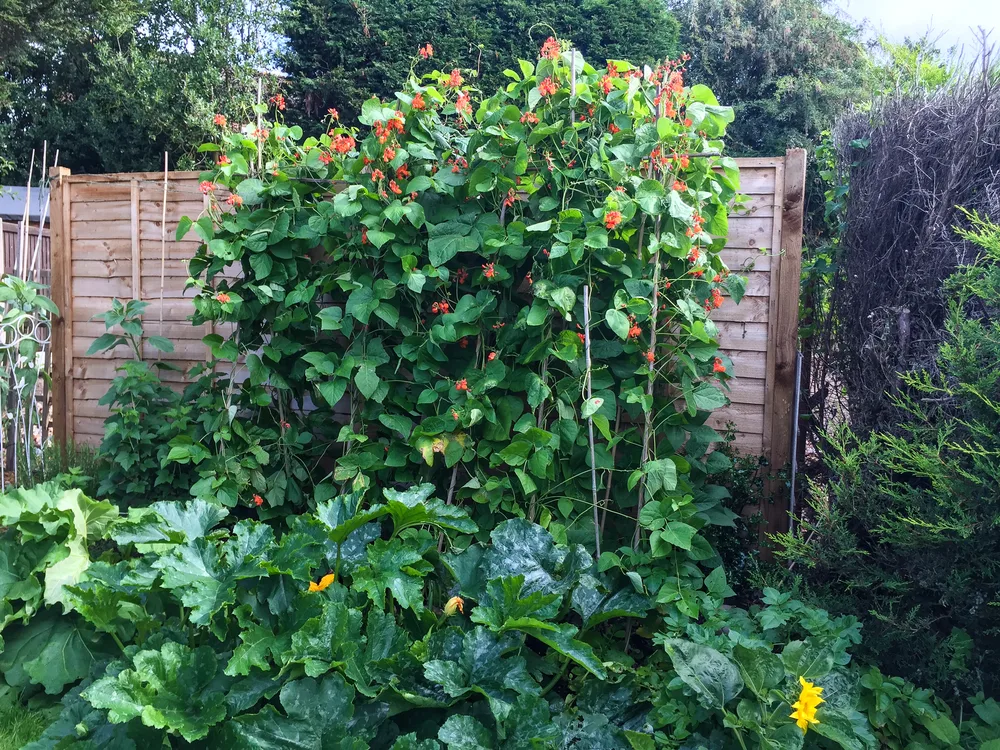
The last Sister is beans, specifically green beans with a vining habit.
Pole beans need to climb, and corn plants, with their tall and sturdy stalks, provide the perfect vertical support for beans to spiral themselves around.
In turn, beans build soil fertility for themselves as well as nearby plants. This is especially efficient when growing heavy feeders like squash and corn.
As a nitrogen fixer, beans are host plants to a special type of soil bacteria, known as Rhizobium. This bacteria pulls nitrogen from the atmosphere and makes it available for plant roots to absorb in the soil.
For its part, squash provides a bit of pest protection. The enormous leaves and stems are covered in needle-like hairs and sharp spines that deters critters and rodents from helping themselves to your corn and beans.
3. Peas (Pisum sativum)
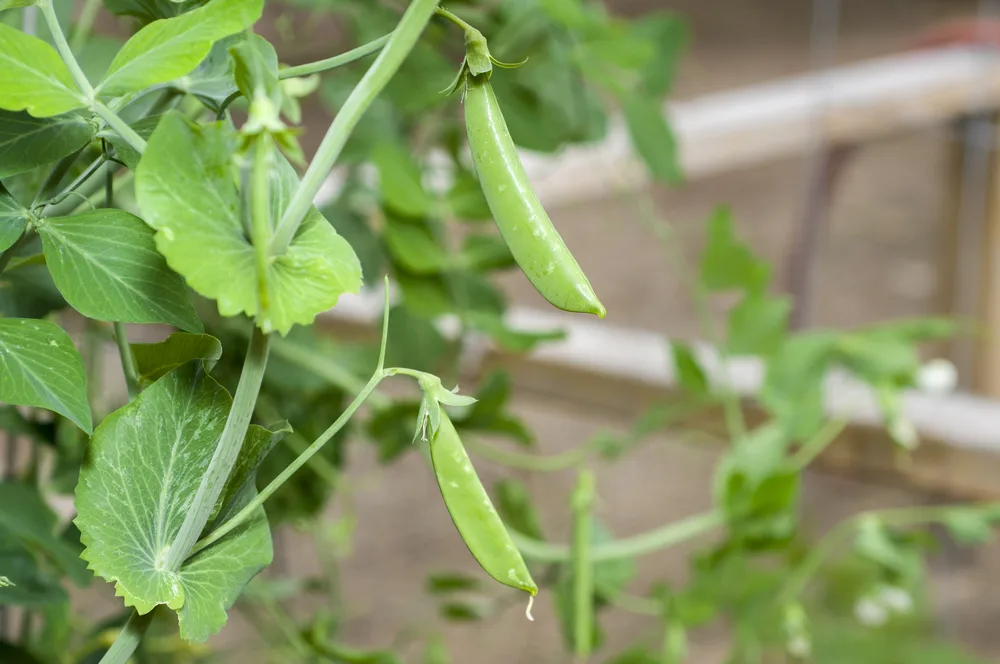
Just like beans, peas are nitrogen fixers that boost fertility in the soil as they grow.
Peas are a cool season crop that can be started outdoors as soon as soil temperatures reach 50°F (10°C). Most varieties take around 60 days to harvest and grow best between 55°F to 64°F (13°C to 18°C).
With bush and vining types, pea cultivars span shelling peas (with a tough, inedible pod), snap peas (with an edible pod, resembling green beans) and snow peas (with a flat, edible pod).
Plant out your peas early to enrich the soil in spring and early summer while zucchini plants are still young and small. Ideally, your pea plants will be harvested just before zucchini needs more space to sprawl.
4. Blue Hubbard Squash (Cucurbita maxima ‘Blue Hubbard’)
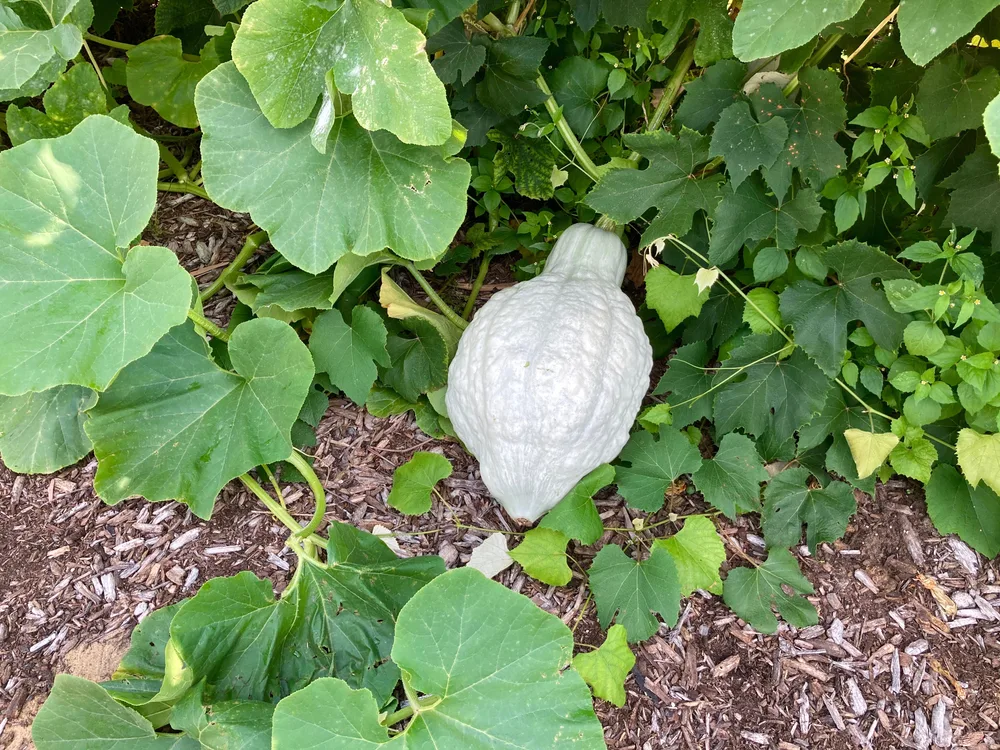
An heirloom winter squash, Blue Hubbard has a bumpy, bluish-green shell with a sweet inner flesh.
Aside from being a tasty addition to the vegetable garden, it acts as a foil for squash bugs, cucumber beetles and vine borers – three of the most destructive pests for all members of the Cucurbit family.
Blue Hubbard squash is the preferred food for these pests and so is an effective trap crop that keeps them away from your prized zucchini.
To work as a trap crop, Blue Hubbard squash seedlings need to be larger than the zucchini plants. Plant out Blue Hubbard two weeks before sowing or transplanting your zucchini seedlings.
Keep them between 3 to 8 feet apart to prevent pests from crossing over. Blue Hubbard squash can be planted at the corners of the veggie patch or grown in containers and placed strategically around the garden.
When you see squash bugs and the like infesting Blue Hubbard squash, it’s important to remove all affected foliage right away. Clip off leaves, bugs and all, and place in a sealed plastic bag before disposing.
Despite being so delicious to these pests, Blue Hubbard squash is remarkably resilient. Even when used as a sacrificial trap crop, you’re likely to bring a few blue gourds to harvest.
5. Borage (Borago officinalis)
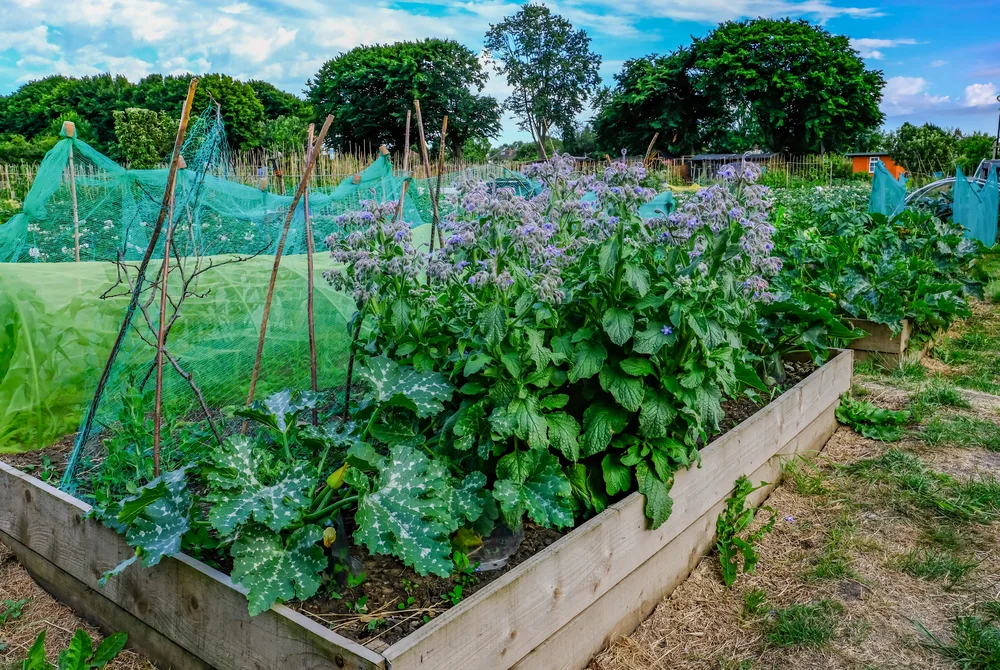
Zucchini plants that put out numerous yellow flowers, but never develop fruit, often means the garden is in desperate need of pollinators.
While you can certainly pollinate squash by hand, it’s always easier to let nature do the work for you.
Borage is one such plant that will lure bees and other pollinators to your vegetable patch.
An edible herb with cucumber flavored and scented leaves, borage blooms from June to August with bright blue star-shaped flowers.
Bees are particularly enticed by the color and shape of borage blooms.
Plant a few of these annuals near your zucchini crop and they will generously reseed themselves year after year.
6. Nasturtium (Tropaeolum majus)
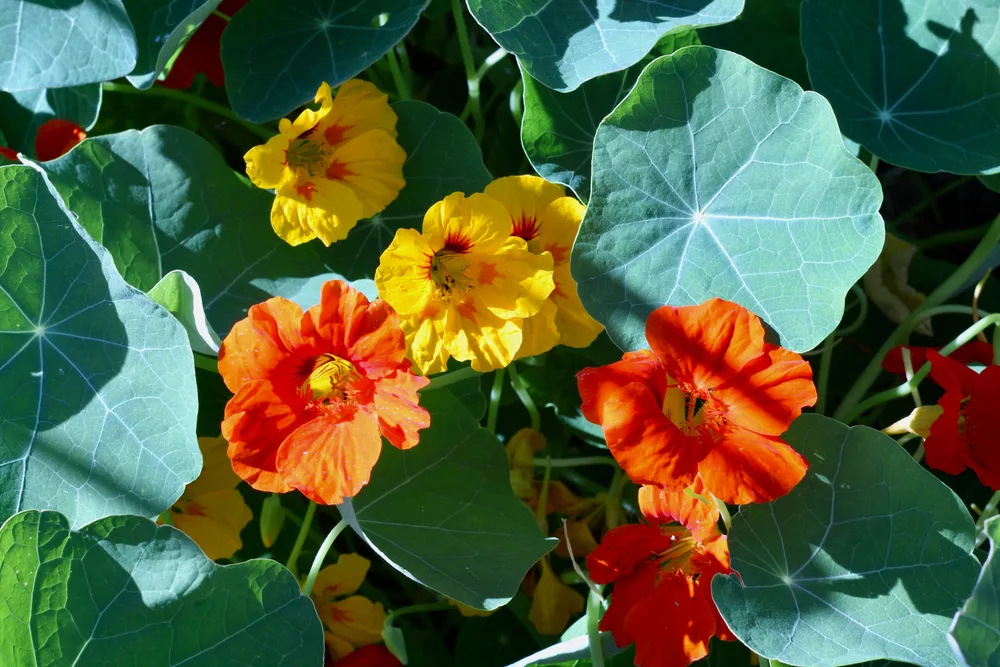
Nasturtiums are another pollinator-friendly specimen that features lovely funnel-shaped flowers in shades of red, orange, and yellow.
Blooming all season long, from spring until autumn, nasturtium is an attractive sprawling plant that will bring butterflies and bees to the garden.
Nasturtiums are also useful as a trap crop for aphids and whiteflies.
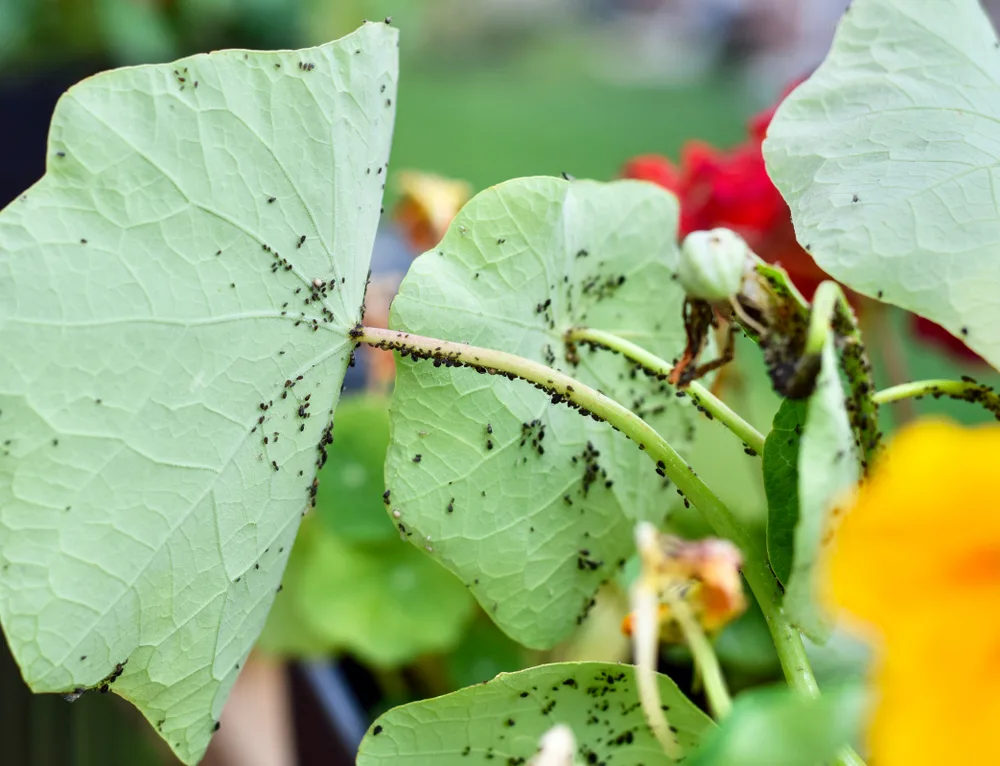
As the preferred food source for these agricultural pests, nasturtiums planted around the perimeter of your vegetable garden will draw them away from your zucchini plants and other food crops.
Aphids are easy to see congregating on nasturtium leaves. Cut back and dispose any afflicted foliage to prevent them from spreading to your more valuable crops.
7. French Marigold (Tagetes patula)
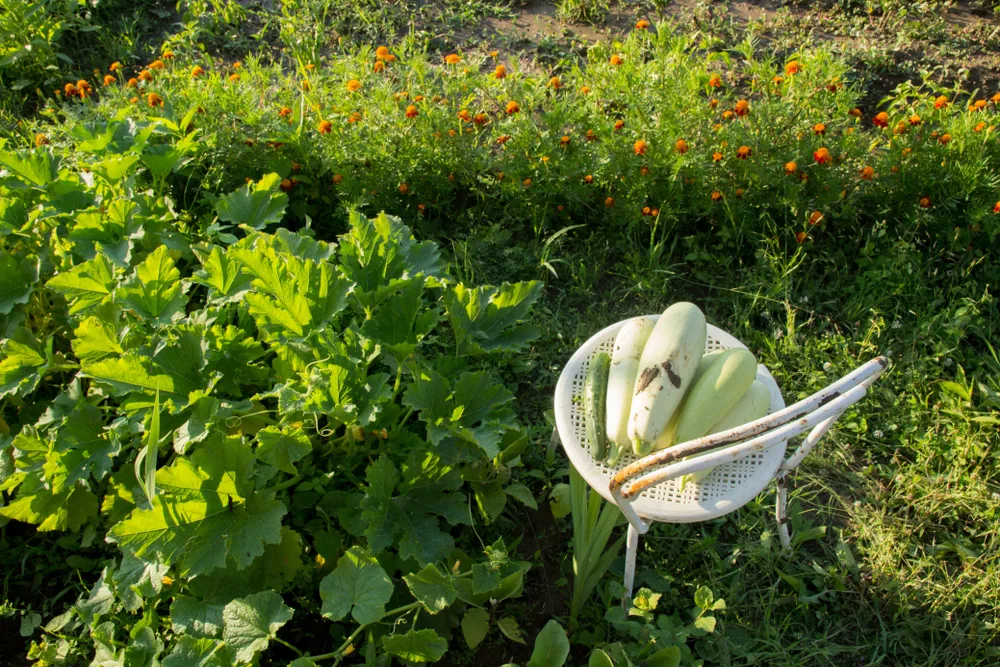
French marigold is an absolute unit in organic polycuture gardens.
Wearing many hats and fulfilling several roles, interplanting French marigold with zucchini and other crops helps strengthen the garden’s innate ecosystem.
French marigold will not only invite bees and butterflies to visit the vegetable patch, they are also appealing to predatory insects. Ladybugs, lacewings and wasps are some of the “good guy insects” that provide natural pest control for aphids and other troublesome creepy crawlies.
These bright and cheery beauties are also an efficient trap crop for slugs and snails, sparing your seedlings from utter annihilation.
The roots of French marigold even secrete a chemical that repels some harmful nematodes.
Last but not least, French marigolds add a pop of color to the vegetable garden. In bloom from June all the way to the first frost, flowers may be solid or bicolor in hues of yellow, orange and red.
8. Dill (Anethum graveolens)
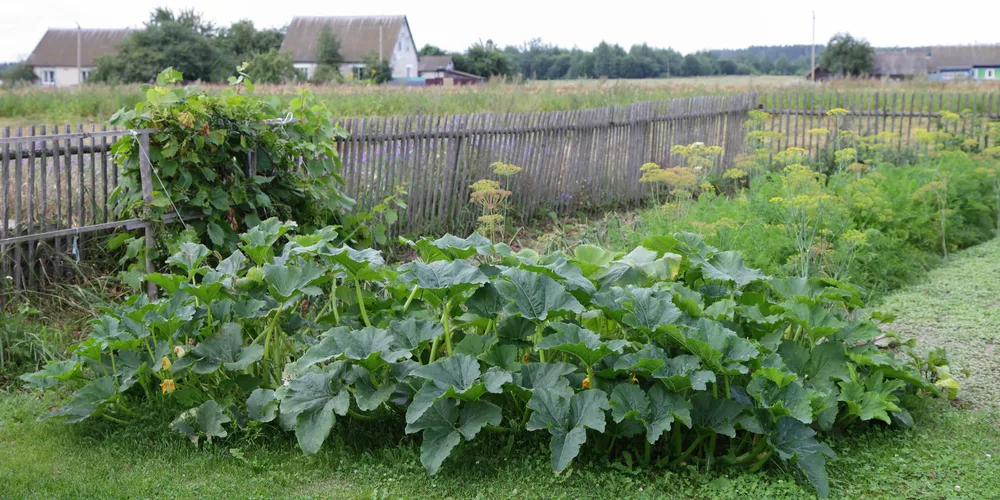
Dill is an aromatic and attractive herb that reaches 3 to 5 feet tall by the end of the season.
Stiff, hollow stems are covered in lacy, delicate, thread-like leaves. Harvest these just as the flat-topped yellow flowers begin to open for the best flavor. Allow blooms to finish to collect the savory dill seeds.
The fragrance of dill attracts myriad beneficials to the garden, including lady bugs, bees, butterflies, lacewings, hoverflies, praying mantis and wasps.
Dill will also help keep spider mites and aphids away from zucchini and other squash cultivars.
9. Catnip (Nepeta cataria)
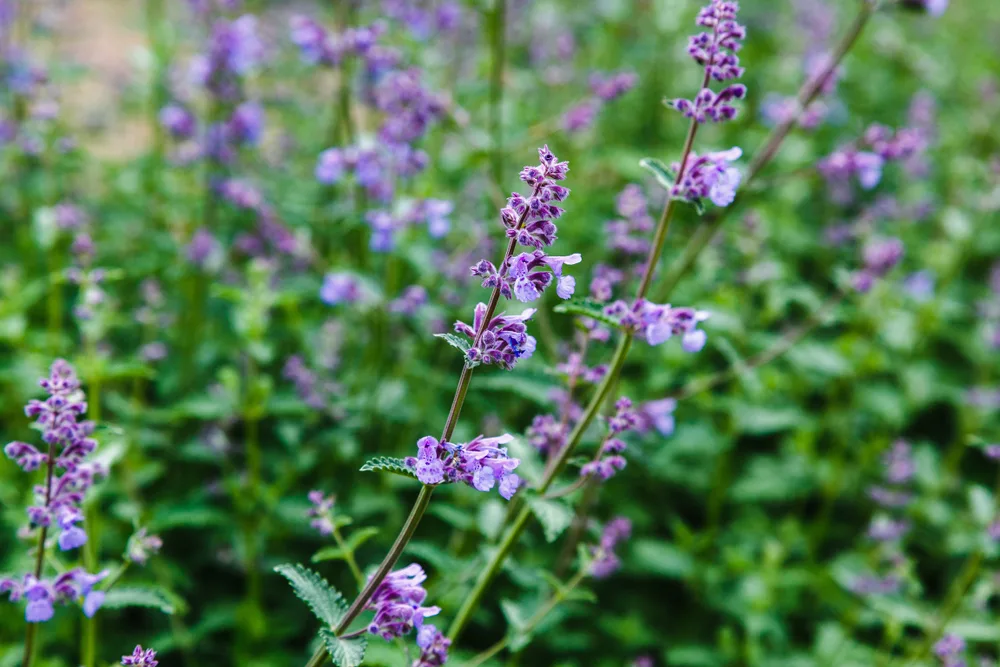
Catnip is an edible herb with a minty flavor, long used in herbal teas to sooth sore throats, induce sleep, and reduce anxiety.
It has a clumping, spreading habit with square stems adorned with coarsely-toothed, downy covered, grey-green leaves.
It blooms continuously from May to September with small white and purple flowers, which are alluring to bees and other pollinators.
Catnip planted along the outer border of vegetable beds will help repel aphids, ants, and squash bugs. It can even deter mice, rats, weevils, and other rodents.
And while it’s true that cats go crazy for catnip, planting it in the yard can prevent our feline friends from digging in the garden. Acting as a trap crop of sorts for kitties, rarely will cats venture past a row of catnip plants – they will simply be too enamored with catnip’s heady fragrance to do much else.
10. Chives (Allium schoenoprasum)
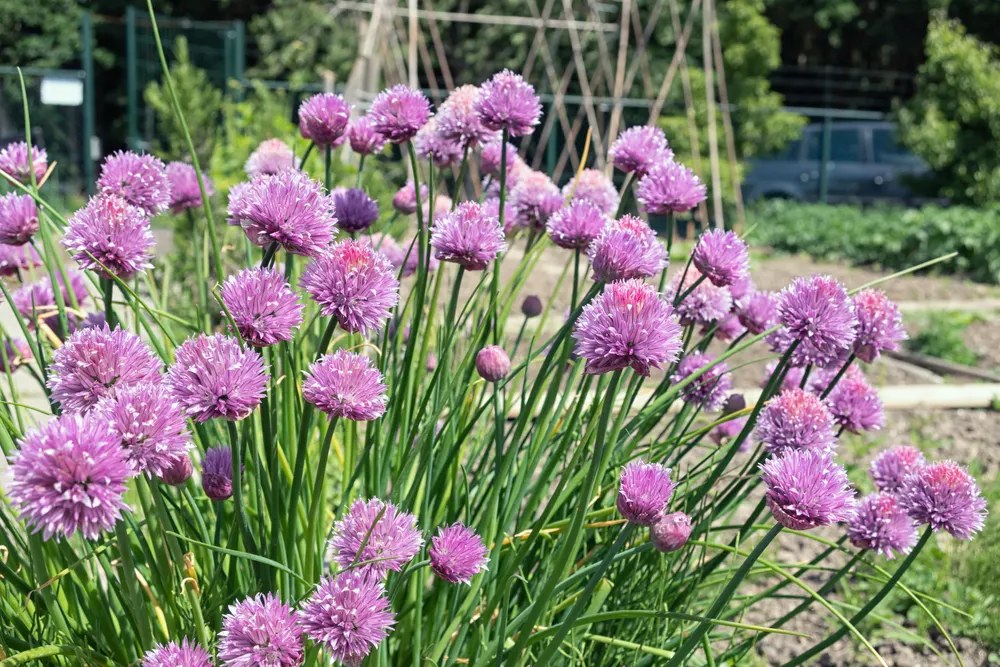
As a friend to most vegetables and herbs, chives are fantastic when teamed up with zucchini too.
Chive leaves are fragrant, with an oniony scent and flavor. Although delicious to us, the smell of chive shoots repels foes of zucchini, like aphids and cucumber beetles.
Let a few chive plants go to flower and you’ll attract more pollinator activity to the garden.
The pretty purple blooms will also bring in more ladybugs, parasitic wasps and rove beetles that will keep pest populations in check.
Plants to Avoid Growing Alongside Zucchini
Potatoes don’t get on well with zucchini and other squash cultivars.
Because both are voracious feeders, growing zucchini next to potatoes will cause these plants to compete for nutrients.
A particularly wet, hot, and humid growing season can increase the risk for blight, a type of fungus that attacks zucchini and potato plants alike. Growing these crops next to each other will only encourage the blight to spread.
Pumpkins like to sprawl, as do zucchini!
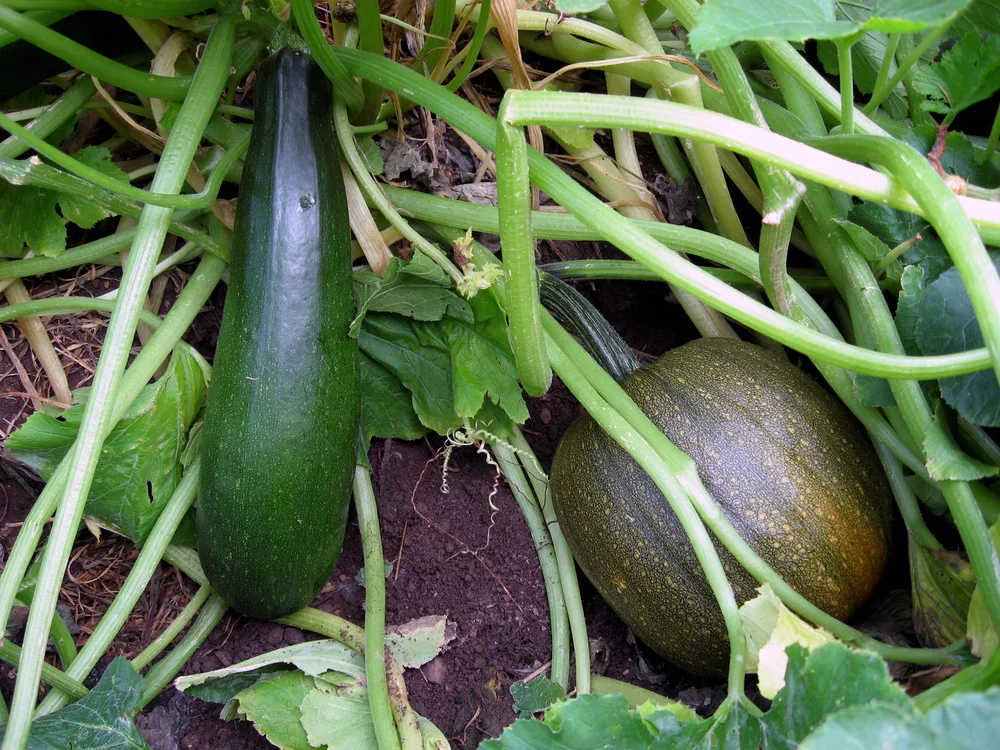
These two plants make poor neighbors since each needs plenty of room to grow. Pumpkins tend to be more aggressive, choking out zucchini and other summer squash with their vining tendrils.
In addition to competing for space, water, and nutrients, growing these squash cousins close to each can alter the look and taste of the fruit. Cross-pollinating squash types can lead to some interesting outcomes, but keep them far and away from each other if you plan on saving seeds that are true-to-type.
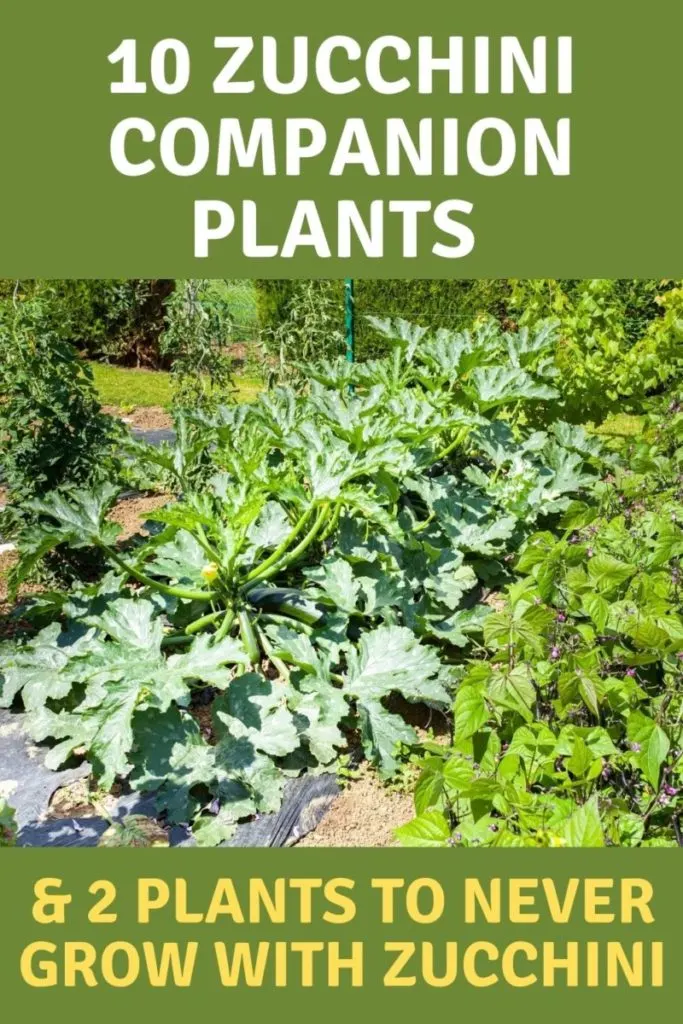

Get the famous Rural Sprout newsletter delivered to your inbox.
Including Sunday ramblings from our editor, Tracey, as well as “What’s Up Wednesday” our roundup of what’s in season and new article updates and alerts.



